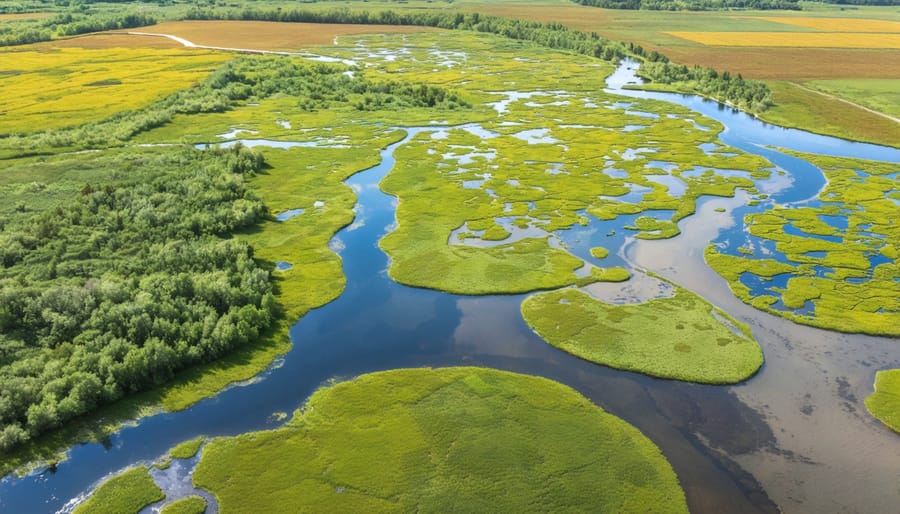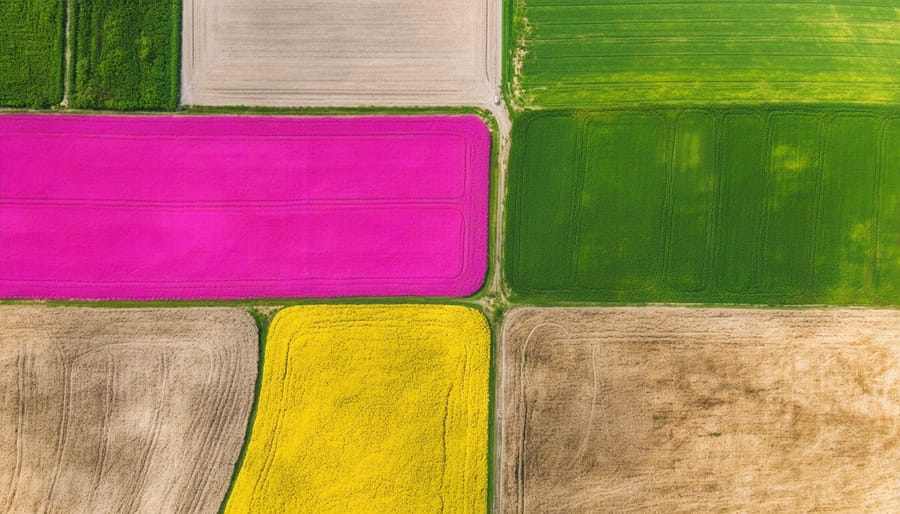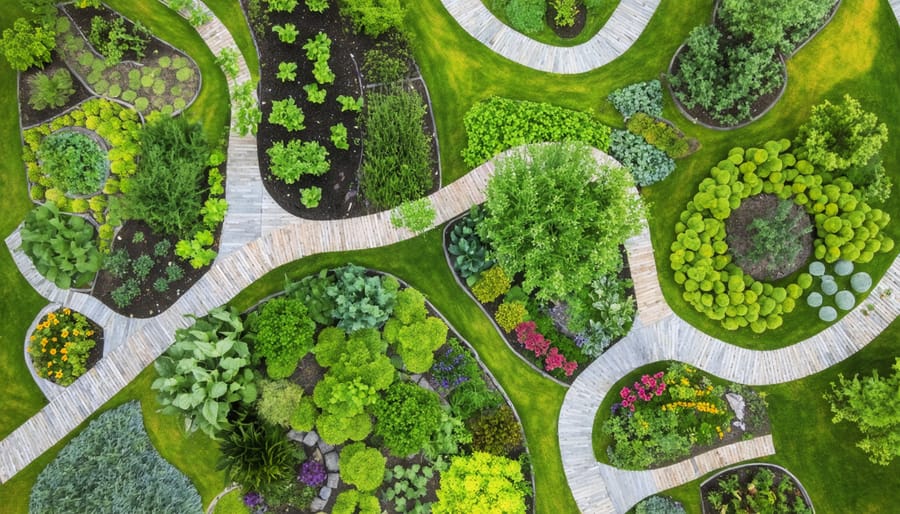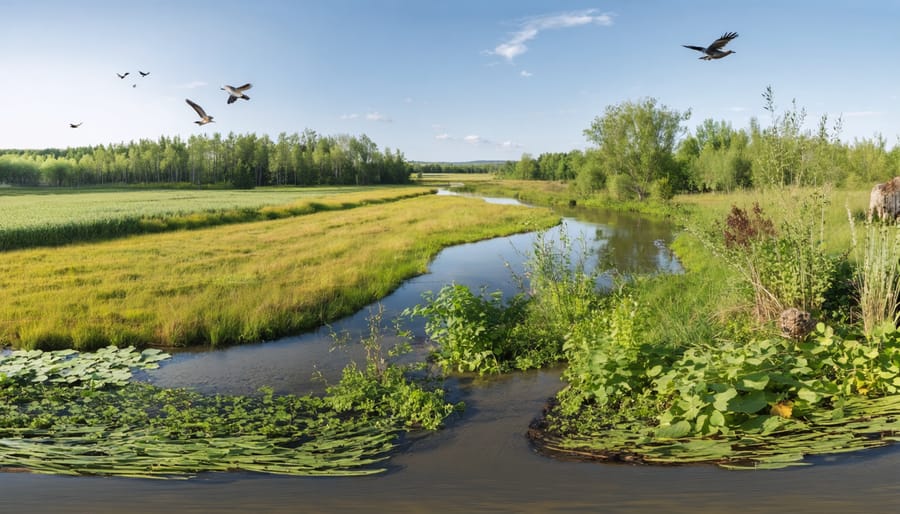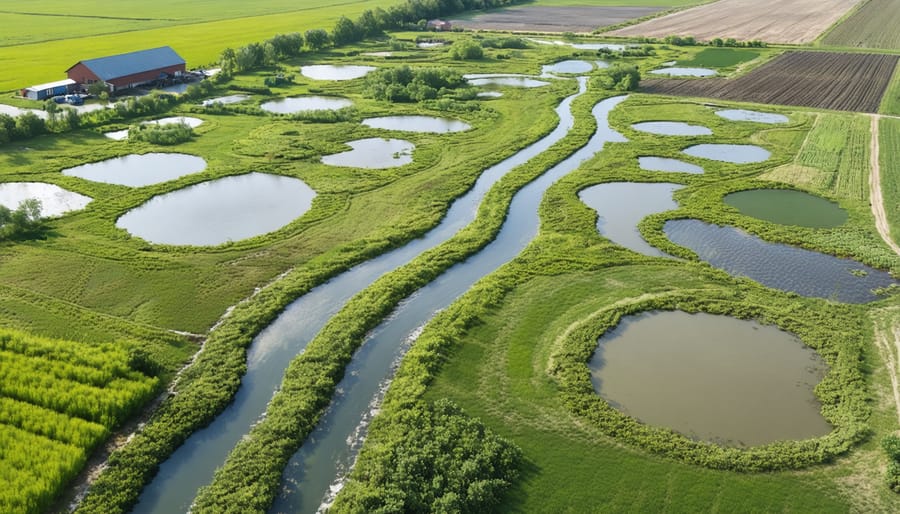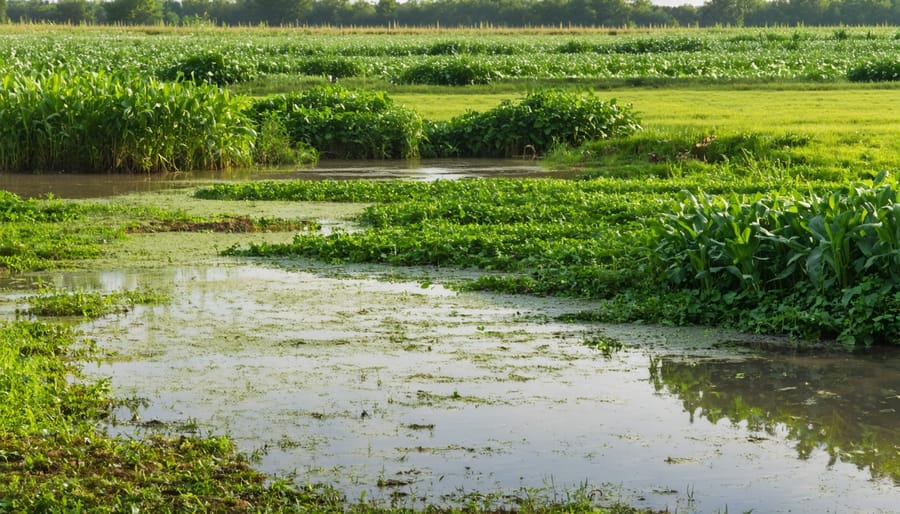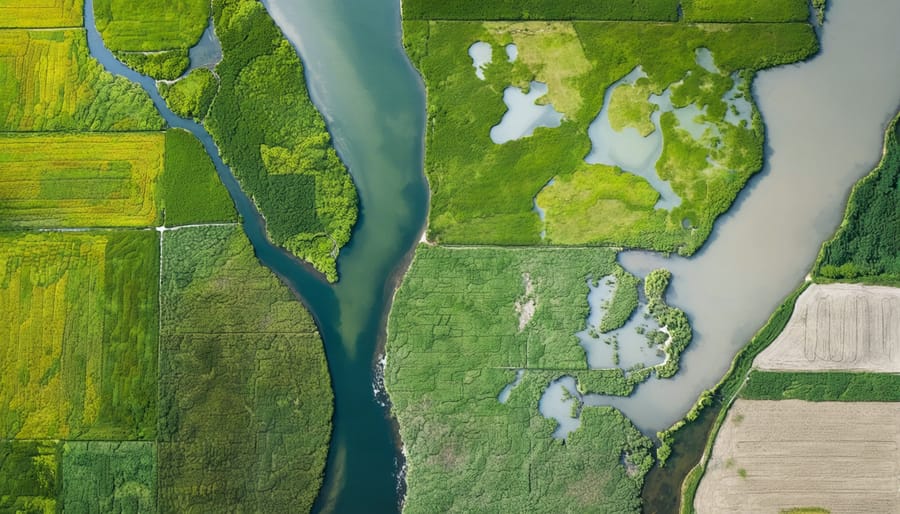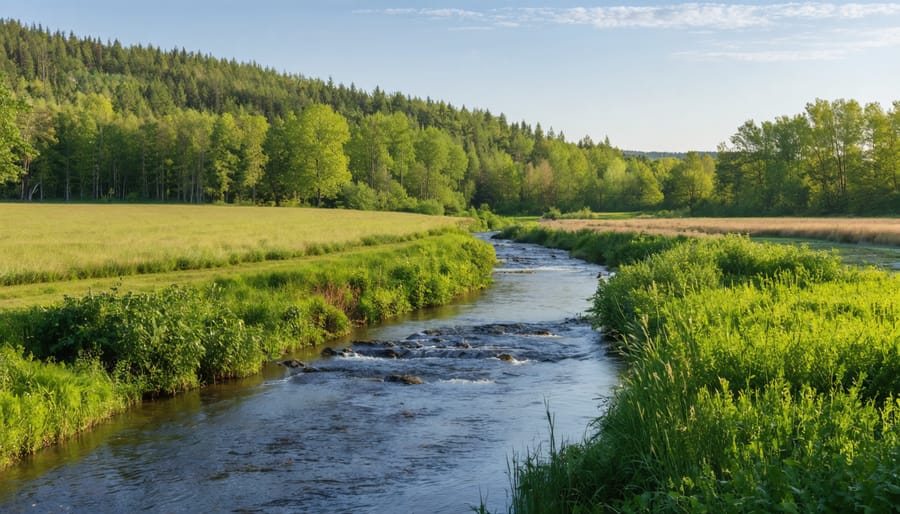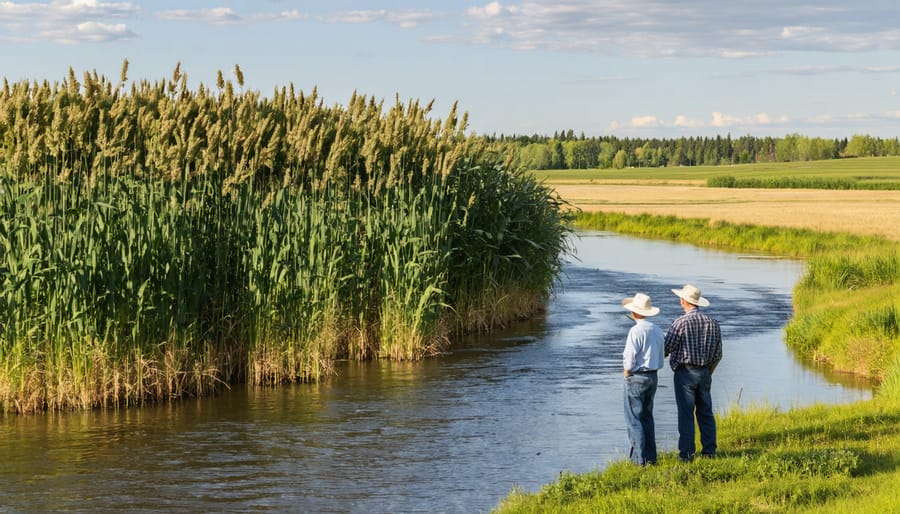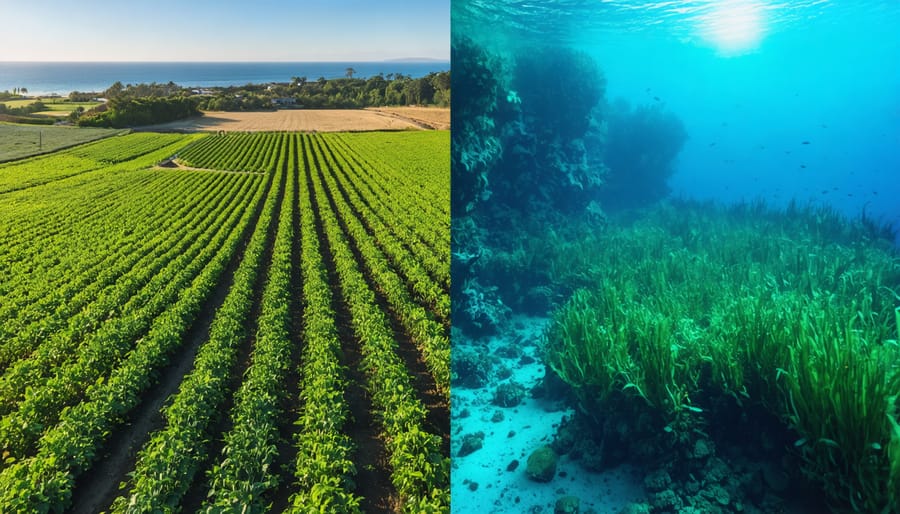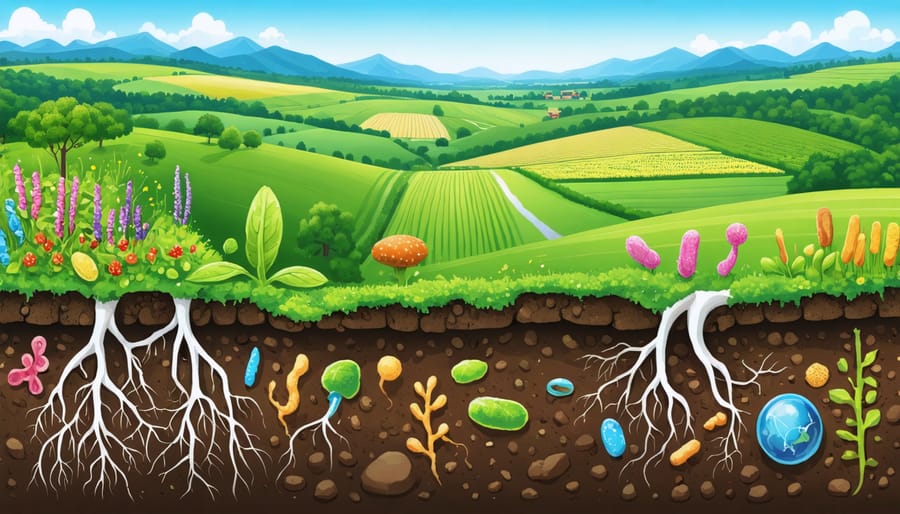Conservation efforts directly shape the future of our agricultural landscapes, delivering measurable improvements in biodiversity across Alberta’s farming communities. Strategic wetland preservation increases native species populations by up to 40% within the first three years, while creating vital corridors for wildlife movement. Farmers who boost biodiversity through targeted conservation practices report stronger pest resistance, improved soil health, and enhanced crop yields. Recent studies from the Prairie Conservation Action Plan demonstrate that even small-scale conservation initiatives, such as maintaining field margins and establishing pollinator strips, can double local insect diversity while supporting essential ecosystem services. This practical approach to land stewardship not only preserves our natural heritage but also strengthens the resilience of agricultural operations, creating a sustainable balance between productive farming and thriving wildlife populations.
Alberta’s Wetland Conservation Success Story
Current State of Alberta’s Wetlands
Alberta’s wetlands currently cover approximately 20% of the province’s landscape, representing a vital ecosystem for both wildlife and agricultural sustainability. Recent surveys conducted by Alberta Environment and Parks show that these areas support over 400 species of plants and provide essential habitat for countless birds, amphibians, and insects.
However, since the early 1900s, nearly 64% of Alberta’s original wetlands have been lost to development and agricultural expansion. The good news is that recent conservation initiatives are making a difference. The Alberta Wetland Policy, implemented in 2013, has helped protect remaining wetlands and restore damaged areas through collaborative efforts between farmers and conservation groups.
Local farmers are increasingly participating in wetland restoration programs, with over 200 projects completed in the past five years. These efforts have resulted in the restoration of more than 5,000 hectares of wetland habitat. The Ducks Unlimited Canada partnership with Alberta farmers has been particularly successful, offering financial incentives and technical support for wetland conservation while maintaining productive agricultural operations.
Many farmers report seeing increased wildlife activity and improved water retention on their land following wetland restoration, demonstrating the tangible benefits of conservation efforts.
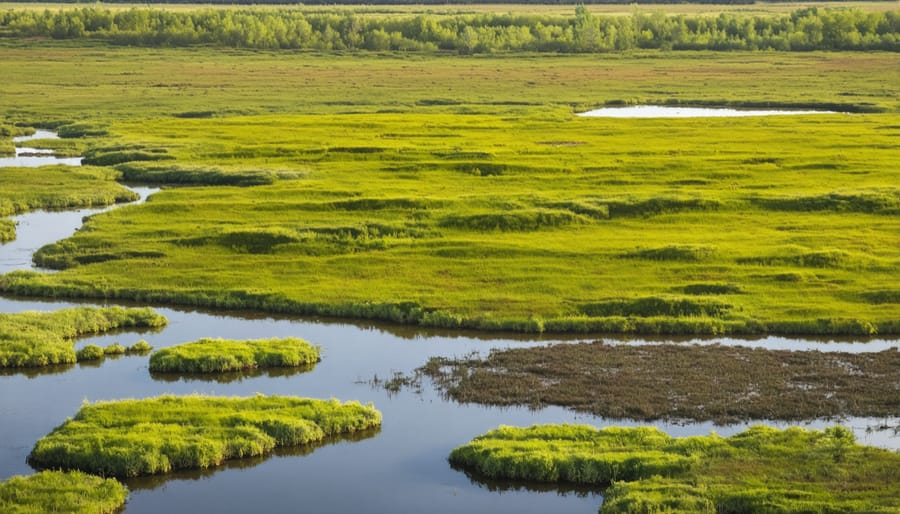
Measuring Biodiversity Improvements
Measuring the success of conservation efforts in Alberta shows encouraging results across multiple indicators. Recent studies from the Alberta Conservation Association reveal a 15% increase in native bird species diversity in areas where farmers have implemented wetland preservation practices. These improvements in supporting local wildlife are tracked through annual species counts, habitat quality assessments, and monitoring of indicator species.
Local farmers participating in conservation programs have documented a 25% increase in beneficial insect populations, particularly pollinators, over the past five years. Soil biodiversity measurements show up to 30% more microorganism variety in protected areas compared to conventional farmland. Water quality indicators have also improved, with wetland areas showing higher dissolved oxygen levels and greater aquatic species diversity.
These improvements are verified through collaborative efforts between farmers and conservation scientists using standardized monitoring methods. Photo documentation, species tracking apps, and seasonal surveys help create a comprehensive picture of biodiversity gains, providing valuable data for future conservation planning and adjustment of management practices.
Farm-Level Conservation Strategies That Work
Buffer Zone Management
Buffer zones around wetlands serve as vital transition areas between agricultural land and natural water bodies, playing a crucial role in preserving biodiversity. Drawing from traditional land management practices, successful Alberta farmers typically maintain buffer strips of 30 to 50 metres wide, depending on the landscape and soil conditions.
These zones act as natural filters, reducing sediment and nutrient runoff from fields while providing essential habitat for native species. Local farmers have found that incorporating native grasses and flowering plants in buffer zones not only supports pollinators but also helps control soil erosion. Species like Blue Grama and June Grass have proven particularly effective in Alberta’s climate.
For optimal buffer zone management, consider implementing these practical strategies:
– Maintain year-round vegetation cover
– Avoid applying fertilizers or pesticides within the buffer zone
– Allow natural regeneration of native plants
– Monitor wildlife activity to gauge effectiveness
– Regular maintenance through selective mowing or grazing
The Wetland Stewardship Initiative in central Alberta has documented a 40% increase in bird species diversity where proper buffer zones are maintained. Local producer Dave Thompson from Red Deer County reports, “Since establishing our buffer zones five years ago, we’ve seen the return of northern pintails and countless beneficial insects that help with natural pest control.”
Remember that effective buffer zones don’t need to be uniform – varying widths and vegetation types can actually enhance biodiversity while working with your farm’s natural landscape features.
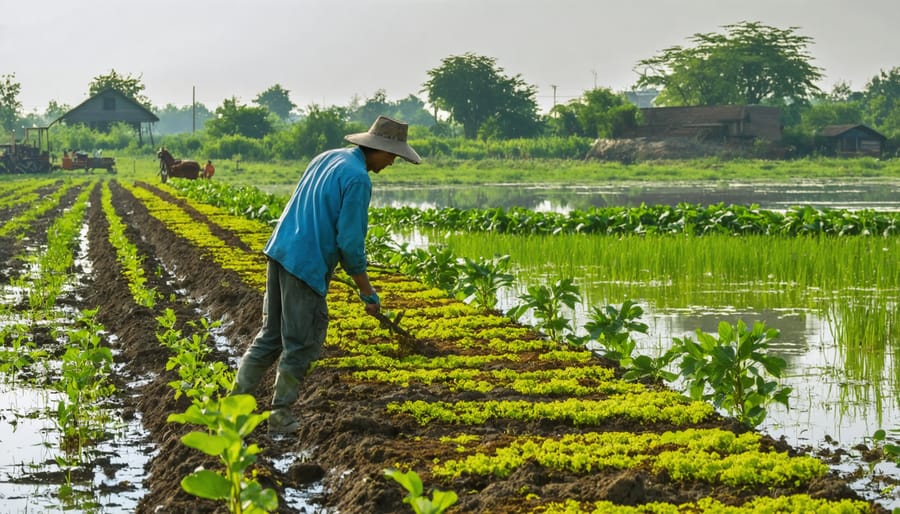
Water Management Techniques
In Alberta’s diverse agricultural landscape, effective water management plays a crucial role in preserving wetland biodiversity. Local farmers have found success with innovative techniques that balance agricultural needs with ecosystem health. For instance, the implementation of rotational grazing systems around wetland areas has shown remarkable results in maintaining natural water cycles while supporting livestock operations.
Many Alberta farmers are now adopting precision irrigation systems that reduce water waste and maintain optimal soil moisture levels. These systems use soil moisture sensors and weather monitoring to deliver water only when and where it’s needed, helping to preserve natural wetland water levels in adjacent areas.
Buffer zones have proven particularly effective in our prairie region. Creating vegetated strips of 10-30 metres around wetlands helps filter runoff, preventing excess nutrients and sediments from entering these sensitive ecosystems. Local research shows these zones can reduce agricultural runoff by up to 85%, significantly improving water quality for native species.
Wetland restoration projects across central Alberta have demonstrated the value of strategic water retention. By installing water control structures and implementing seasonal flooding patterns that mimic natural cycles, farmers have successfully created habitat for waterfowl while maintaining productive agricultural land.
The Alberta Wetland Policy provides guidance for implementing these practices, with many farmers reporting increased wildlife sightings and improved soil health after adoption. Simple measures like timing fertilizer applications to avoid heavy rain periods and maintaining natural drainage patterns have shown significant benefits for both farm operations and local biodiversity.
Remember, even small changes in water management can lead to substantial improvements in wetland health and biodiversity over time.
Economic Benefits of Wetland Conservation
Government Incentives and Support
Alberta farmers have access to several valuable funding programs that support wetland conservation efforts. The Growing Forward 2 program offers cost-sharing opportunities for implementing sustainable practices, including wetland restoration projects. Farmers can receive up to 70% of eligible costs for approved conservation initiatives.
The Alberta Wetland Policy provides additional financial incentives through the Wetland Replacement Program, where landowners can receive compensation for protecting existing wetlands or creating new ones on their property. The Alternative Land Use Services (ALUS) program, active in several Alberta counties, offers annual payments to farmers who dedicate portions of their land to wetland conservation.
Local conservation authorities frequently partner with agricultural communities to provide technical support and funding. For example, Ducks Unlimited Canada’s “Wetland Restoration Incentive Program” offers up to $2,000 per acre for wetland restoration projects in priority areas across Alberta.
The Environmental Farm Plan (EFP) program helps farmers identify conservation opportunities and access funding through various government channels. By completing an EFP, farmers become eligible for grants supporting biodiversity enhancement projects.
Recent provincial initiatives have expanded to include the Agricultural Watershed Enhancement Program, offering matching funds up to $50,000 for projects that improve water quality and support wildlife habitat. These programs demonstrate Alberta’s commitment to supporting farmers who contribute to biodiversity conservation.
Long-term Farm Benefits
Maintaining healthy wetland ecosystems on your farm can deliver substantial financial returns over time. Research from the University of Alberta shows that farms with preserved wetlands experience up to 15% higher crop yields in adjacent fields, primarily due to improved water retention and natural pest control. These economic advantages of biodiversity extend well beyond immediate crop benefits.
Alberta farmers who maintain wetlands report average savings of $3,000 per quarter section annually on irrigation costs. Natural water filtration through wetland systems also reduces the need for expensive water treatment infrastructure. Local producer Mike Thompson from Red Deer County shares, “Since preserving our wetland areas, we’ve cut our irrigation expenses by nearly 40% while maintaining production levels.”
Additionally, wetlands act as natural flood control systems, potentially saving thousands in flood damage repairs. They also provide habitat for beneficial insects and birds that help control agricultural pests, reducing pesticide costs by up to 25% according to Alberta Agriculture and Forestry data.
Carbon offset programs are another revenue stream, with some Alberta farmers earning $2,000-$4,000 annually per wetland acre through various environmental service payment programs. When combined with reduced input costs and improved yield stability, wetland conservation creates a robust foundation for long-term farm profitability.
Case Study: The Morrison Farm Restoration Project
Located just outside of Camrose, Alberta, the Morrison Farm has become a shining example of how conservation practices can dramatically enhance biodiversity. In 2015, third-generation farmer Sarah Morrison partnered with Ducks Unlimited Canada to restore 40 hectares of wetlands that had been drained in the 1960s for crop production.
The restoration process began with extensive soil and hydrology studies to understand the land’s natural water patterns. Through careful engineering and local expertise, the team reconstructed three main wetland basins and implemented buffer zones using native prairie grasses. The project cost $175,000, with 70% funded through conservation grants and the remainder contributed by the Morrison family.
Within just two years, the results were remarkable. Bird surveys conducted by University of Alberta researchers documented a 300% increase in waterfowl species, including the return of northern pintails and blue-winged teals. The wetland areas also attracted numerous amphibian species, with northern leopard frogs establishing breeding populations for the first time in decades.
The project’s success wasn’t limited to wildlife. Soil testing revealed improved water retention in surrounding cropland, resulting in a 15% reduction in irrigation needs. The restored wetlands act as natural filters, reducing nitrogen runoff by approximately 40% and providing cleaner water for livestock.
“We’re seeing benefits we never expected,” says Sarah Morrison. “The wetlands help manage spring flooding, and we’ve noticed fewer pest problems in our crops since beneficial insects have returned to the area.”
The Morrison Farm now serves as an educational site, hosting field days for local farmers and agricultural students. The family has documented their journey, sharing practical insights about working with conservation organizations and maintaining productive farming alongside protected areas.
The project demonstrates how conservation can create a win-win situation for agriculture and biodiversity. By strategically placing wetland areas and implementing rotational grazing in buffer zones, the Morrisons maintain profitable operations while supporting diverse ecosystems. Their experience provides a practical blueprint for other Alberta farmers interested in similar initiatives, showing that environmental stewardship and successful farming can go hand in hand.
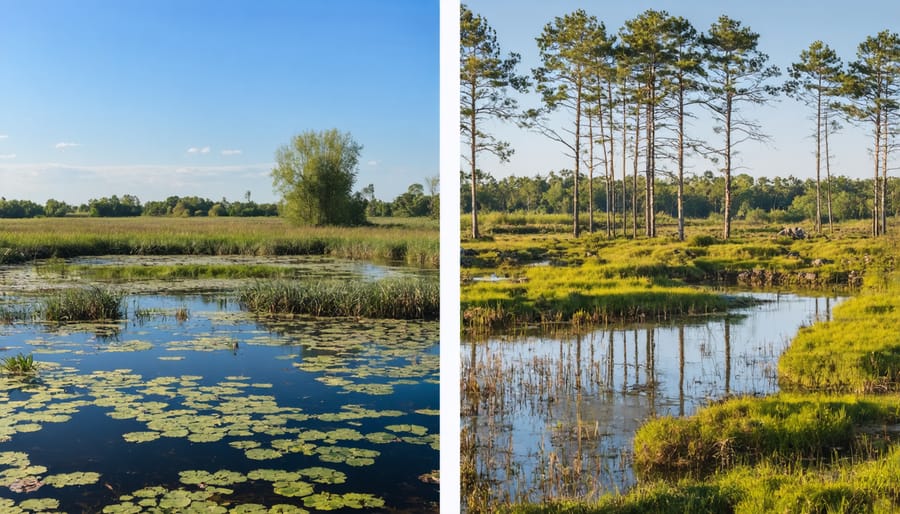
As we’ve explored throughout this article, wetland conservation plays a vital role in maintaining and enhancing biodiversity across Alberta’s agricultural landscape. The evidence is clear: farms that incorporate wetland conservation practices consistently see increased species diversity, improved soil health, and better long-term productivity.
For farmers ready to take the next step in wetland conservation, several practical pathways are available. Start by connecting with your local Agricultural Fieldman or Conservation Authority to assess your land’s potential for wetland restoration or enhancement. These experts can help you identify priority areas and develop a tailored conservation plan that works with your farming operations.
Financial support is available through various programs, including the Alberta Wetland Conservation Initiative and ALUS Canada, which can help offset implementation costs. Additionally, joining local farmer-led conservation groups can provide valuable peer support and shared learning opportunities.
Remember that even small changes can make a significant difference. Whether it’s maintaining existing wetlands, establishing buffer zones, or implementing rotational grazing around wetland areas, each action contributes to the broader goal of biodiversity enhancement.
By embracing wetland conservation, you’re not just supporting wildlife – you’re investing in the future of sustainable agriculture in Alberta. Your efforts help create a resilient landscape that benefits both farming operations and our natural heritage for generations to come.
Take that first step today by reaching out to your local conservation office and becoming part of Alberta’s growing community of conservation-minded farmers.

